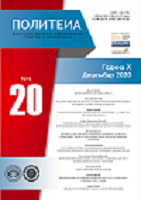Emancipatorska uloga umetnosti i medija u reprezentaciji traume
Emancipataory role of art and media in trauma representation
Author(s): Mirjana NikolićSubject(s): Theatre, Dance, Performing Arts, Sociology of Culture, Film / Cinema / Cinematography, Sociology of Art, Politics of History/Memory, History of Art
Published by: Fakultet političkih nauka Univerziteta u Banjoj Luci
Keywords: film; radio drama; Holocaust; remembrance; representation; trauma;
Summary/Abstract: Art and the media have a significant role in the representation of reality, and throughout their history, they have often been a powerful tool for social and political elites to achieve their goals. It is, therefore, not surprising that, during the reign of totalitarian regimes and in crisis social situations, art and the media claim the absolute right to the truth, acting as a means of propaganda, imprinting the desired ideas in the consciousness of citizens as an audience. There are numerous papers in which the capacities of art and media are presented and analyzed, considering their roles in social engagement and manipulation. Starting from the theoretical views of Jacques Rancière (emancipated viewer) and H. M. Enzensberger (emancipatory role of the media), the paper will analyze the cohesion of art and media in the process of representing the past, especially when it is a source of traumatic experiences. The great crisis generated by World War II, and the Holocaust as a product of it, was a generator of a global trauma as well as the source of a series of individual traumas. Through specific examples related to the field of radio drama, movie, and themedia, we will try to re-examine the capacities of art forms and media texts in representing trauma, as well as their ability to bring horrible events from the past to the audience. Does the essence of a work of art represent its capacity to be a transmitter of traumatic experiences or is it a ramp, a border, a line of defense for the audience, considering the fact that, even in its most inherent form, a work of art is more moderate than the reality it refers to? The key case studies in the analysis of the presented hypotheses will be two artistic, media texts, both from 1985: The movie Shaw (by Claude Lanzmann) and the radio drama Searching for Ashes (Djordje Lebovic / Slobodan Boda Markovic)
Journal: Politeia - Naučni časopis Fakulteta političkih nauka u Banjoj Luci za društvena pitanja
- Issue Year: 12/2022
- Issue No: 23
- Page Range: 29-37
- Page Count: 9
- Language: Serbian

